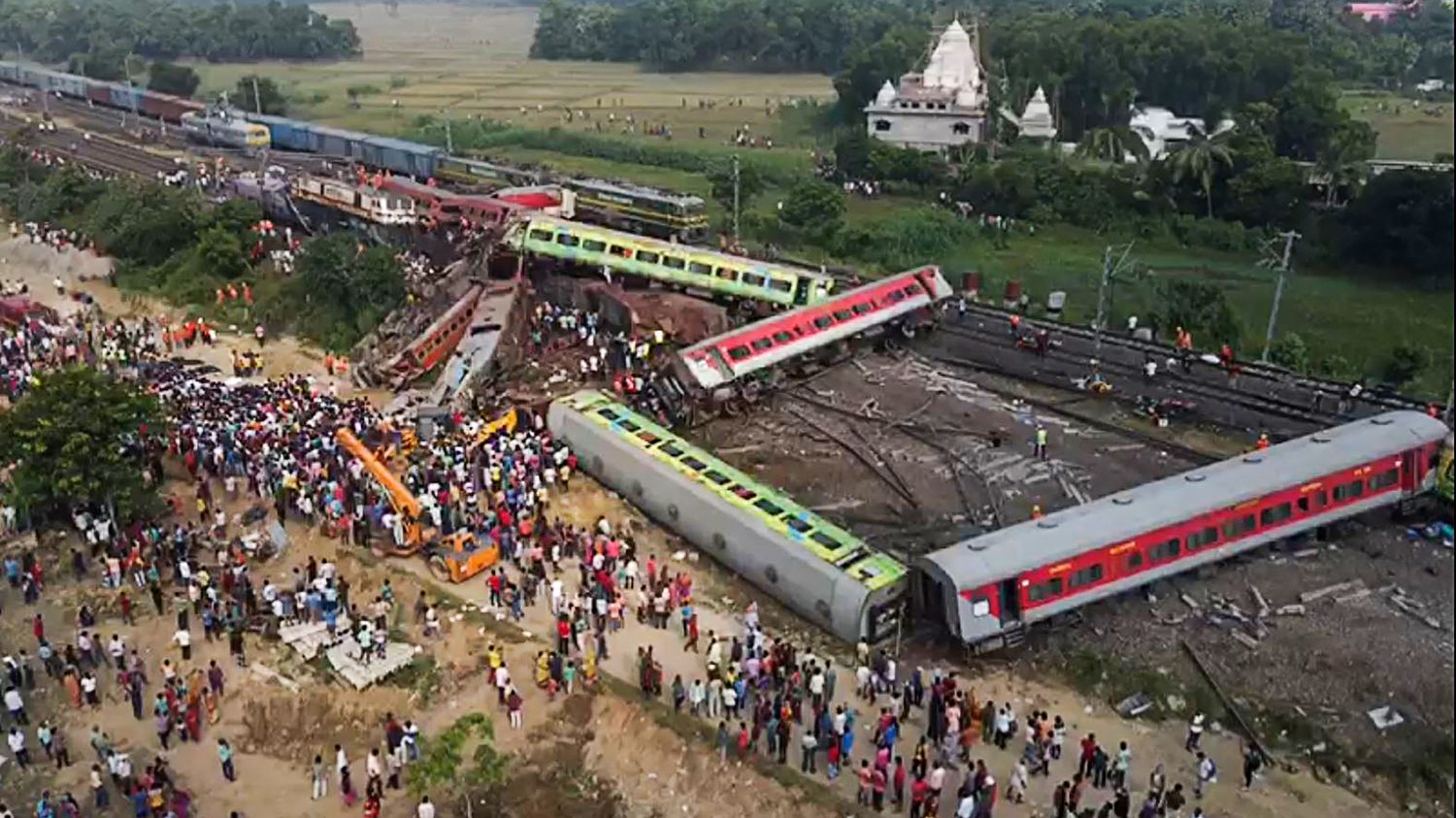The latest assessment of this collision reports 288 dead and 850 injured. A national day of mourning has been declared.
Overturned wagons, hundreds of rescuers, corpses covered with white shrouds on the rails… The situation was still chaotic on Saturday June 3, after the train disaster which left at least 288 dead and 850 injured on Friday evening in the east of India. Communicated Saturday morning by the Odisha State firefighting services, the toll was still provisional due to the presence of many travelers trapped inside the metal carcasses of the wagons. Here is what we know about this accident, one of the deadliest in the country’s rail history.
Three trains are involved in the accident
According to Amitabh Sharma, the director of Indian Railways, two passenger trains were “actively involved in the accident”which occurred near the town of Balasore in eastern India.
According to an inspection report published on Saturday, relayed by India Todaythe accident was caused by a “signal failure” occurred on the line. The passenger train, the Shalimar-Chennai Coromandel Express, entered a wrong rail loop, instead of the originally planned route to the city of Chennai in southern India.
A cargo convoy was parked at the site and was rammed by the Shalimar-Chennai Coromandel Express. Wagons of the latter then found themselves on the opposite track. It was here that another train, the Howrah Superfast Express, which was traveling from Yesvantpur to Howrah, rammed into these carriages, aggravating the accident.
“The number of casualties on the ground or injured is very difficult to assess at the moment”, said Amitabh Sharma, as many passengers were trapped in the rubble. The coordinators announced on Saturday evening the end of rescue operations at the accident site.
The army has been mobilized to help the relief
Very quickly, after the collision, help rushed to the scene of the tragedy. According to AFP journalists, hundreds of rescuers were on hand to extract the lifeless bodies of people present inside the carcasses. A relentless parade of ambulances dropped off injured people at Bhadrak district hospital overnight, where the bloodied and shocked survivors are being treated in overcrowded conditions.

Indian Transport Minister Ashwini Vaishnaw visited the scene on Saturday morning and announced that the army would be mobilized to help the victims. Prime Minister Narendra Modi also visited a nearby hospital to meet survivors of the crash. “My thoughts are with the bereaved families. May the injured recover quickly”he wrote on Twitter, saying to himself “afflicted” by this disaster. A national day of mourning has been declared.
It is one of the deadliest train accidents
India has experienced several serious rail disasters in the past. The deadliest dates from June 6, 1981 when, in the state of Bihar, in the east of the country, seven wagons of a train crossing a bridge fell into the Bagmati River, killing between 800 and 1,000 people. In November 2016, the Patna-Indore express train, on board which were 2,000 people, also derailed in a rural area of the state of Uttar Pradesh, in the north of the country, killing 146 people and injuring around 180. . Since the turn of the century, 13 rail accidents, including at least three caused by terrorist attacks, have each claimed more than 50 lives.
